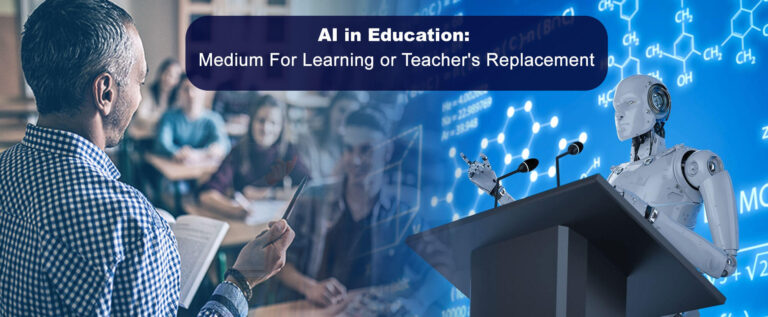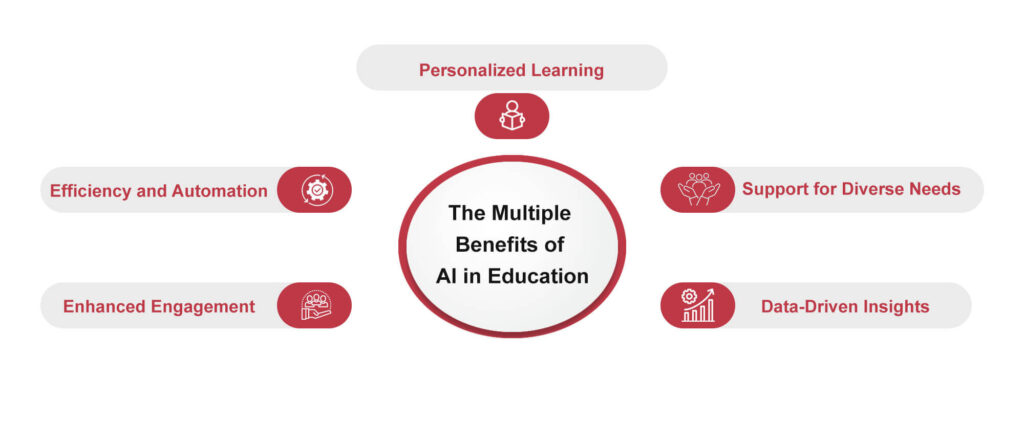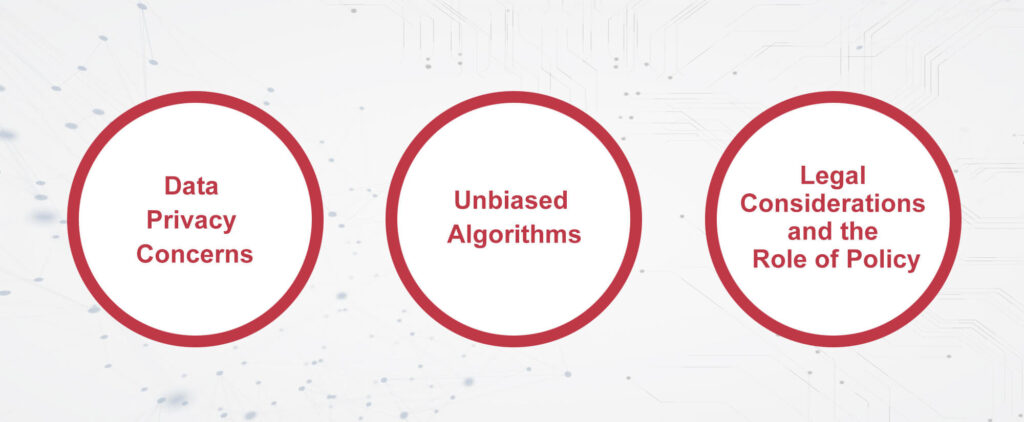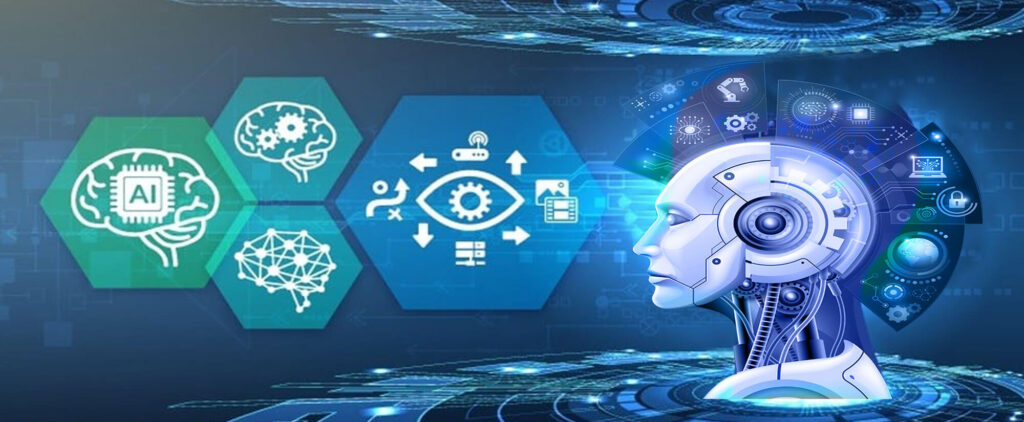
AI in Education: Medium For Learning or Teacher’s Replacement
We stand on the brink of a revolution by Introducing “AI in Education”. The transformative potential of artificial intelligence is not just reshaping industries but is also redefining the way of how we educate and learn. From healthcare to finance and from analytics to marketing, AI’s footprint is evident, but its most profound impact might very well be in the classrooms of tomorrow.
The world has witnessed rapid technological advancements in the field of AI in the past few years. Industries have evolved, businesses have transformed, and our daily lives have become intertwined with digital innovations. Among these, AI stands out as a beacon of change, indicating a new era of possibilities. And as it saturates every sector, education emerges as a prime candidate for AI’s transformative touch.
A future where every student gets a personalized learning experience, where educators are empowered with tools of unprecedented precision, and where the boundaries of traditional classrooms are expanded beyond physical walls.
This journey into the world of AI in education is not just about technology. It’s about harnessing its power to create more inclusive, engaging, and effective learning environments. It’s about understanding the vast potential and the challenges, ensuring that as we step into the future, we do so with vision, purpose, and a commitment to excellence.
The Multiple Benefits of AI in Education

The integration of “AI in Education” is not just a technological shift, it’s a revolutionary change that offers a wide range of benefits.
What are the advantages that AI brings to the educational table?
Personalized Learning: One of the most significant breakthroughs AI offers is the ability to tailor educational content to individual student needs. The one-size-fits-all approach days are gone. With AI-driven platforms, students can now receive customized lessons, ensuring that learning is aligned with their pace and style. This personal touch ensures that no student is left behind, and each one gets the optimal learning experience tailored just for them.
Efficiency and Automation: For educators, AI is nothing short of a boon. Routine administrative tasks, which once consumed a significant chunk of their time, can now be automated. From grading assignments to tracking student attendance and performance, AI streamlines these processes, allowing educators to focus on what they do best – teaching.
Enhanced Engagement: The digital-age student is tech-savvy and often seeks interactive and engaging learning experiences. AI offers gamification, virtual reality (VR), and immersive learning experiences. These tools not only make learning fun but also enhance retention and understanding, making education a truly interactive experience.
Support for Diverse Needs: Every student is unique, and so are their learning needs. AI recognizes this diversity and offers tools specifically designed for students with disabilities and different learning styles. Be it speech recognition tools for the differently-abled or adaptive learning platforms for those with learning challenges,
Data-Driven Insights: In the age of information, data is king. AI harnesses the power of data analytics to provide insights into student performance. Educators can now get real-time feedback, identify areas of improvement, and strategize teaching methods to ensure every student achieves their full potential.
The benefits of integrating AI into education are manifold. It’s not just about making processes efficient. It’s about redefining the learning experience, making it more personalized, inclusive, and impactful.
AI's Role in Rural and Underserved Areas

AI in Education extends beyond the state-of-the-art classrooms in urban centres. Its true potential will shine when it’ll reach the corners of the world where traditional education systems have often stuttered.
How AI is making waves in rural and underserved areas.
Bridging the Educational Divide: For decades, rural areas have fought with challenges like limited resources, fewer qualified teachers, and outdated teaching methods.
AI will emerge as a source of hope in such scenarios. With AI-driven educational platforms, students in remote areas can access high-quality content, interactive lessons, and even virtual tutors. It’s not just about providing education, it’s about ensuring that the quality of education is on par with urban centres.
This democratization of learning is pivotal in levelling the playing field and ensuring that every student, irrespective of their geographical location, has a fair shot at a quality education.
Virtual Classrooms and Remote Learning Opportunities: The concept of a classroom is being redefined. No longer confined to four walls, AI-powered platforms are creating virtual classrooms where students from different parts of the world can come together to learn. These virtual spaces offer interactive lessons, real-time feedback, and even opportunities for collaborative projects. For students in rural areas, this means they can access courses that might not be available in their local schools.
The Teacher and AI: A Collaborative Approach

The Education industry often raises a fundamental question: Will AI replace teachers?
At the heart of every educational journey is the teacher, a guiding force whose impact goes beyond academics. AI, with all its advancements, cannot replicate the human touch, empathy, understanding, and mentorship that teachers provide.
Instead, AI serves as a powerful tool in the hands of educators. It amplifies their capabilities, provides them with resources, and ensures that they can cater to the diverse needs of their students more effectively. The essence of teaching remains human; AI merely provides the tools to make this process more efficient and impactful.
AI Enhances Teacher Capabilities and Reduces Burnout. It is a noble profession, but it’s also one that comes with its set of challenges. Administrative tasks, grading assignments, and managing large classrooms can lead to burnout. This is where AI steps in as a saviour. By automating routine tasks, AI allows teachers to focus on what truly matters which is interacting with students, providing mentorship, and crafting impactful lessons.
Likewise, with AI-driven insights, teachers can identify areas where students might be struggling and tailor their teaching methods accordingly. This not only enhances the quality of education but also ensures that teachers find their roles more fulfilling and less exhausting.
In the grand scheme of education, teachers remain the artists, crafting the future of their students with dedication and passion.
AI, in this scenario, is the brush, the tool that allows them to paint more vividly, ensuring that every student gets a masterpiece of education tailored just for them.
Ethical and Legal Implications of AI in Education

The integration of AI in Education is not without its challenges. As we use the infinite benefits, it’s crucial to address the ethical and legal implications that arise.
Data Privacy Concerns: With AI systems collecting vast amounts of data to provide personalized learning experiences, data privacy emerges as a paramount concern. Schools, institutions, and ed-tech companies must ensure that the data collected is stored securely, and any potential breaches could compromise the personal information of students. It’s not just about securing data; it’s about building trust. Parents, educators, and students need the assurance that their data is used solely for educational purposes and is protected from any misuse.
Unbiased Algorithms: AI systems are only as good as the data they’re trained on. If this data carries biases, AI algorithms can retain and even amplify these biases. In an educational context, this could lead to unfair assessments, misguided learning recommendations, or even discrimination. AI systems in education must be trained on diverse and representative datasets, ensuring that the outcomes are fair and unbiased.
Legal Considerations and the Role of Policy: As AI becomes more integrated into the education system, there’s a pressing need for clear legal frameworks. These frameworks should address issues like data ownership, accountability in case of AI errors, and the rights of students and educators.
Moreover, policies should be in place to guide the ethical use of AI, ensuring that its integration aligns with the core values of education.
Potential Drawbacks and Challenges of AI in Education

Alongside the numerous benefits, there are potential pitfalls and challenges that educators, policymakers, and stakeholders must address.
Dependence on Technology: As classrooms become more tech-centric, there’s a growing concern about over-reliance on technology. While AI-driven tools can enhance learning, they shouldn’t overshadow the fundamental human aspects of education. There’s a risk that students might become too dependent on AI for answers, potentially stifling critical thinking and problem-solving skills. It’s crucial to strike a balance, ensuring that technology complements, rather than replaces, traditional learning methods.
The Risk of Depersonalized Education: One of AI’s strengths is its ability to provide personalized learning experiences. However, if not implemented thoughtfully, there’s a risk of education becoming too mechanized and losing its personal touch. The human connection between teachers and students is irreplaceable and AI should aid this connection, not diminish it. While the lessons might be AI-driven, the human essence of mentorship, guidance, and support remains intact.
Infrastructure and Training Requirements: The integration of AI in education isn’t simply introducing another teaching software. It requires robust infrastructure, from high-speed internet connections to advanced hardware. Especially in underserved areas, this can pose a significant challenge. Additionally, for AI to be effectively utilized, educators need training. They must be equipped not just to use AI tools but to integrate them seamlessly into their teaching methodologies.
Today’s educators can either embrace AI or ignore it until they cannot. But, It’s clear that AI is bound to come and take over the world. Not like how it happened in Terminator, but as a helpful companion, easing their burdens and allowing them to excel in what they do best.

